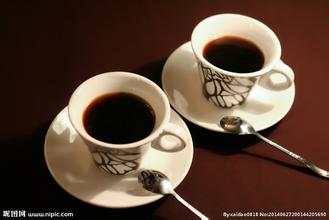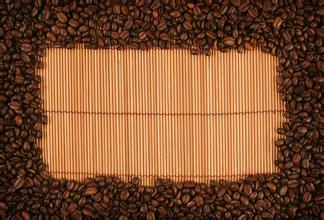Introduction to the characteristics of Ecuadorian Coffee Flavor description and Grinding degree treatment
Arabica coffee trees were first introduced to Ecuador in 1952, and their coffee quality is very good, especially when harvested in early June. Ecuadorian coffee beans can be divided into Galapagos (Galapagos) and Gigante (Gigante) two varieties, both have large particles, heavy portions of characteristics. Ecuadorian coffee can be divided into two types according to quality: No.1 and ExtraSuperior. They are mainly exported to the Nordic countries of Scandinavia.
The main problem coffee producers face is trying to maintain consistent quality. The coffee is generally very balanced and refreshing, with a distinctive aroma.
Ecuador is one of the few countries in South America that produces both Arabica coffee and Robaik coffee. But as the land available for arabica coffee trees dwindles, robert coffee production is increasing. The best Arabica coffee is grown in the Andes, especially in the Chanchamgo Valley, which divides into two mountain ranges extending from south to north into central Ecuador
Ecuador is the world's highest arabica coffee plantation. Arabica coffee trees were first introduced to Ecuador in 1952 and the quality of their coffee is excellent, especially when harvested in early June. Ecuadorian coffee beans can be divided into Galapagos (Galapagos) and Gigante (Gigante) two varieties, both have large particles, heavy portions, balanced acidity, aromatic characteristics. Ecuadorian coffee can be divided into two types according to quality: No.1 and ExtraSuperior. They are mainly exported to the Nordic countries of Scandinavia. It can be made into high-quality coffee blends suitable for many uses.
The coffee beans produced on the Galapagos Islands in Ecuador are organic coffee beans, which benefit from the unique ecological environment such as volcanic soil and microclimate. In addition, they do not use any fertilizers and pesticides. They are recognized as natural green fine coffee. This naturally grown coffee tastes mild and has a light fragrance of flowers and caramel. It is understood that the Galapagos Islands are about 1000 kilometers away from the mainland of Ecuador and are located at the intersection of the East Pacific Ocean and the three major ocean currents. In 1978, the Galapagos Islands were declared a "World Natural Heritage Site" by UNESCO. Known as the "Museum of Living Biological Evolution" and "Melting Pot of Marine Life," the islands inspired Darwin's Theory of Evolution.
Alpine beans join roses so amazing
Mr. Veniso, winner of the 2014 Ecuadorian Coffee Competition, told reporters that in Ecuadorian coffee, some are espresso made from Ecuadorian alpine coffee beans, which are produced in mountainous areas at an altitude of about 1000~2000 meters. They taste mellow, with the aroma and sweetness of fruit, grass and chocolate; some are based on this espresso plus mint from the Amazon River Basin; Others add Ecuadorian rose petals, known as the "Rolls Royce of Roses," to espresso, and the taste is amazing
This article is transferred from [Food Business Network], original text: www.21food.cn/html/news/38/1607474.htm

Important Notice :
前街咖啡 FrontStreet Coffee has moved to new addredd:
FrontStreet Coffee Address: 315,Donghua East Road,GuangZhou
Tel:020 38364473
- Prev

Introduction to the characteristics of fine coffee beans in taste producing areas of Antigua coffee in Guatemala
Guatemala is a presidential republic in Central America, located in the south of the North American continent. It is bordered by the Pacific Ocean to the west, the Caribbean Sea to the east, Mexico to the north and Honduras and El Salvador to the southeast. Coffee was really introduced into Guatemala in 1750 by Father Jesuit, and the coffee industry was developed by German colonists at the end of the 19th century.
- Next

Introduction to the characteristics of Coffee production area by the method of Coffee Grinding degree in Saint Roman Manor, Costa Rica
There are many excellent producing areas in Costa Rica, and the high-quality producing areas of Costa Rica have a common understanding of quality, that is, it requires the use of mature coffee fruits to ensure the production of high-quality coffee. Generally speaking, a large amount of water is used in the post-processing of picked coffee fruit, but the advanced production equipment in Costa Rica saves the use of water resources to the greatest extent.
Related
- Detailed explanation of Jadeite planting Land in Panamanian Jadeite Manor introduction to the grading system of Jadeite competitive bidding, Red bid, Green bid and Rose Summer
- Story of Coffee planting in Brenka region of Costa Rica Stonehenge Manor anaerobic heavy honey treatment of flavor mouth
- What's on the barrel of Blue Mountain Coffee beans?
- Can American coffee also pull flowers? How to use hot American style to pull out a good-looking pattern?
- Can you make a cold extract with coffee beans? What is the right proportion for cold-extracted coffee formula?
- Indonesian PWN Gold Mandrine Coffee Origin Features Flavor How to Chong? Mandolin coffee is American.
- A brief introduction to the flavor characteristics of Brazilian yellow bourbon coffee beans
- What is the effect of different water quality on the flavor of cold-extracted coffee? What kind of water is best for brewing coffee?
- Why do you think of Rose Summer whenever you mention Panamanian coffee?
- Introduction to the characteristics of authentic blue mountain coffee bean producing areas? What is the CIB Coffee Authority in Jamaica?

